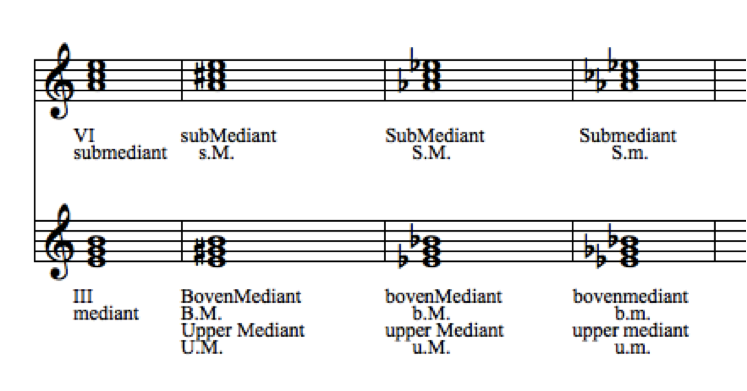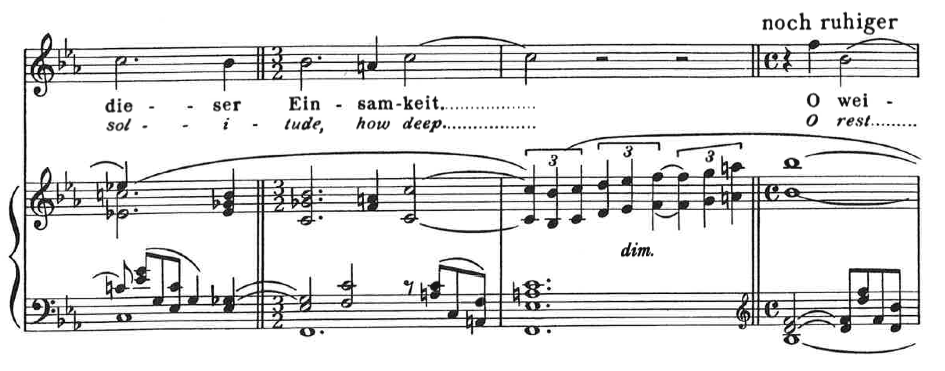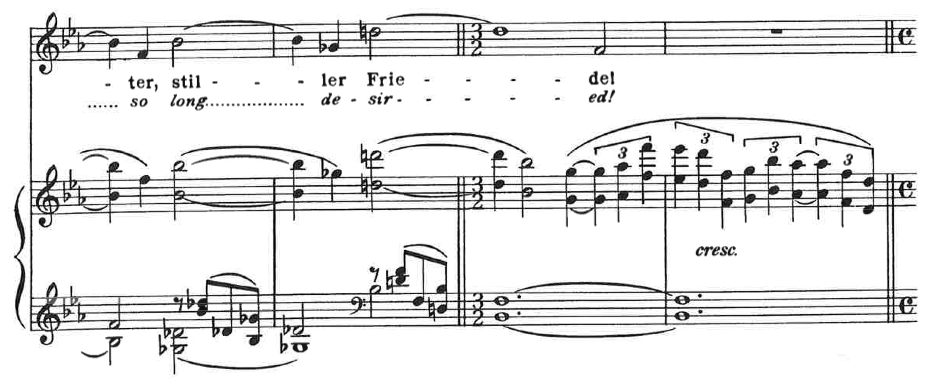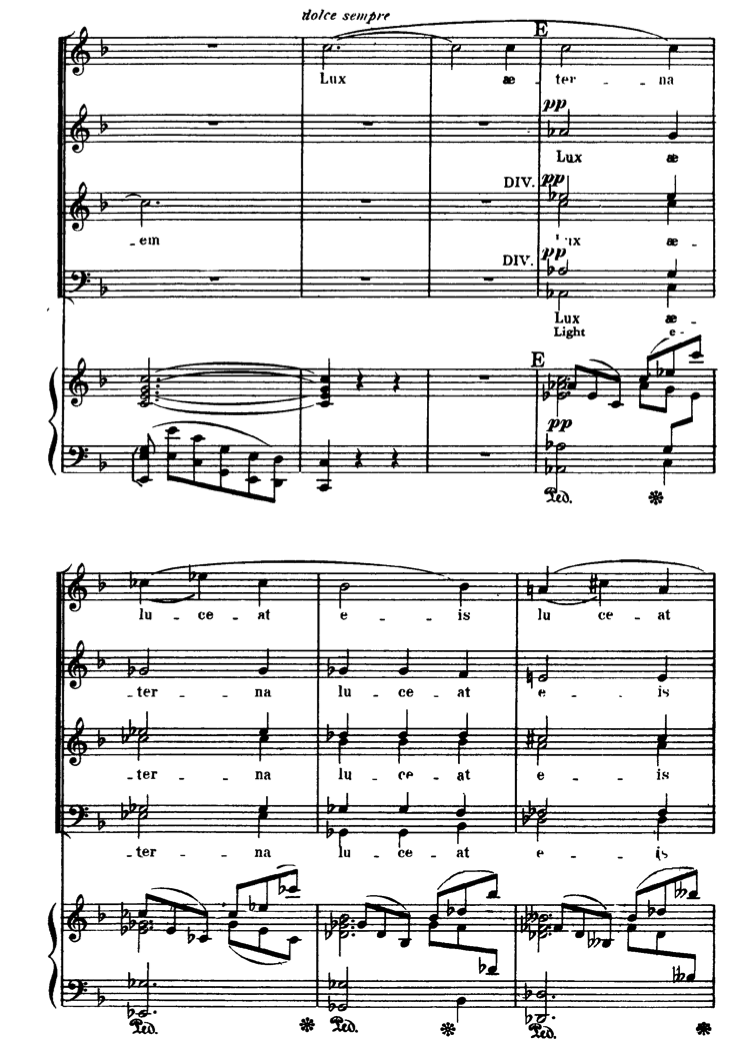Mediants
In the music of late romanticism ample use is made of chord combinations with altered triads that create a surprising and colourful effect. This is the case with major and minor triads that are third-related. Third-related in a broad sense: also the enharmonic variants of major and minor third are included; so not only Ab-Cb, but also Ab-B.
Labeling
We can find the term mediant among the names of the different degrees in a scale:
I tonic
II supertonic
III mediant
IV subdominant
V dominant
VI submediant
VII leading tone
Within this series we find:
- The mediant (III) as "middle" between I en V, and
- the submediant (VI) as "middle" between I en IV.
As such the use of chords which are third-related does not give a special or dramatic effect. The chord sequence I-VI-IV-II-V-III-I is an example of that.
| 1. | I | VI | IV | II | V | III | I |
| C | Am | F | Dm | G | Em | C | |
| 2. | C | A | F | Dm | G | E | C |
But if we replace in the example Am by A and Em by E, we get a special effect.
In this way we can construct three variants of III: E, Eb Eb m.
And three variants of VI: A, Ab, and AB M.
Coding

With the first letter we give the distance in relation to I:
normal letter = minor third, capital = major third.
With the second letter we give the colour of the triad: normal letter for minor, capital for major.
Richard Strauss - Im Abendrot: Bb en Gb, resp. I en S.M.


Mediantrelation
With the use of colourful third-related chords in general we speak of mediant relationship. An example of this in the form of a harmonic sequence we can find in the Requiem by Faure (Agnus Dei):
Gabriel Fauré - Requiem (Agnus Dei):




